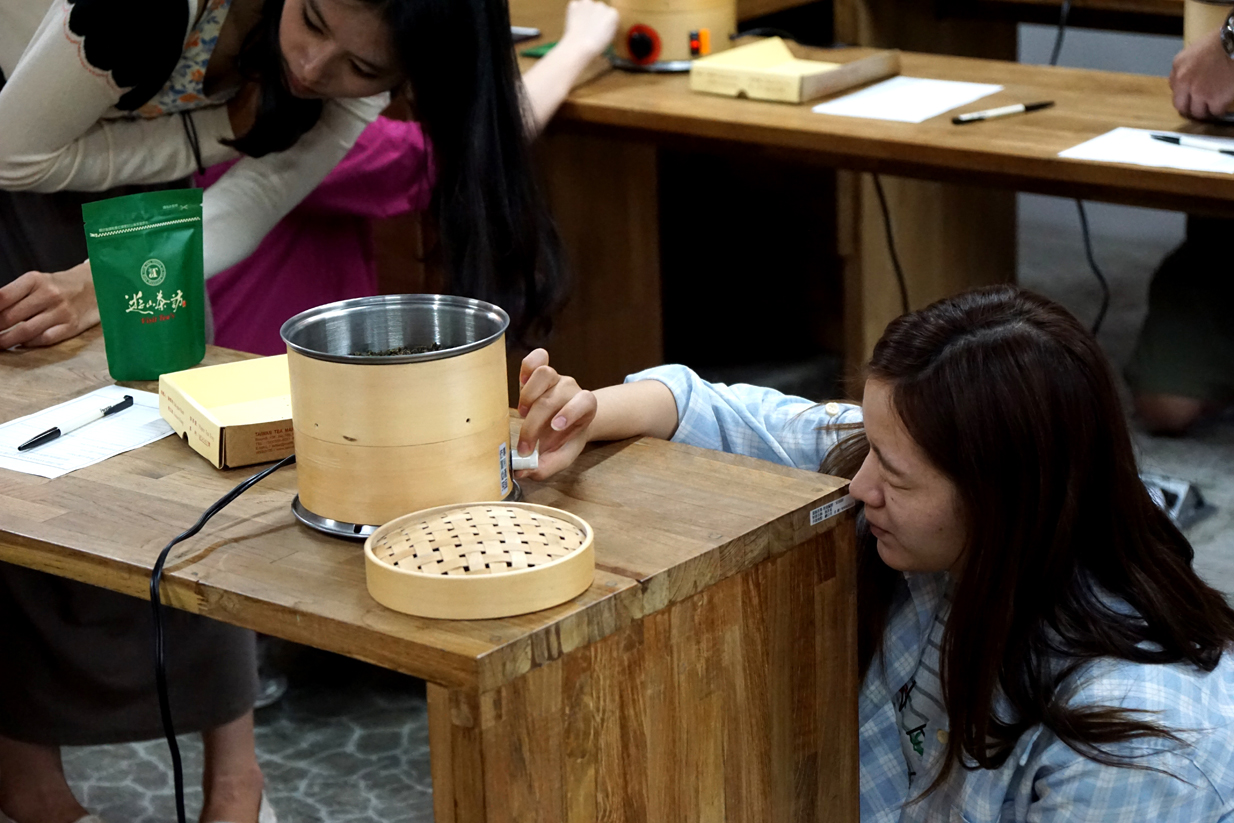
“Throat-cooling, sweet notes and anointed aroma” describe Dong Ding oolong’s flavors— after being roasted, its distinctive notes are so robust and unforgettable the flavors have been described “as an entering into one's bones”.
- What are the purposes of roasting?
1. To lower the moisture content in tea leaves and to prolong its shelf life.
2. To remove any unpleasant its flavors.
3. To change and to enhance its flavors.
- What kinds of tea are suitable for roasting?
Semi-fermented oolong tea. Dong-Ding Oolong Tea, Tieguanyin, Wu-Yi Rock Tea and Phoenix Dan Chong are commonly seen for roasting.
- Does the tea become aged-tea after being roasted?
Only those which have been stored for a long period of time would be called aged-tea. During the period of storage, the taste of tea could be changed by the moisture level in the environment. So we need to apply sufficient roasting level to lower the moisture content.
If the tea is given heavy roasted without being stored, it is not aged-tea.
If the tea has been roasted too much, it would not only burn the tea leaves and destroy its quality, but also making it difficult to open up when brewing.
- The Science behind Roasting.
1. Maillard reaction: the amino acid and carbohydrate in the tea leaves would release rich aroma when being heated under the temperature of 118℃ (244℉). This can often be seen in food processing, such as meat pan-frying.
2. Evaporation of Caffeine: applying a longer time on heating will make the caffeine within the tea leaves evaporated, leading to lowering the astringent feeling in the tea.
- Is charcoal-roasting better?
The secret of success is to roast the tea in accordance with the tea types. While charcoal’s feature being its radiant heat and penetrating power strong, not all tea types are suitable for charcoal roasting. The common ways of roasting nowadays include charcoal-roasting, warm-heat roasting and heat-coil roasting. We should pick the most suitable one based on the characteristics of the tea.
- How to roast tea?
Tea roasting relies heavily on experiences without a perfect SOP to follow. The elements that need to be taken into considerations include the quality of the tea leaves, the machine used for roasting, the temperature and the humidity level in the roasting environment, the size of the roasting space, the air-circulation and the mood of the roasting master.
- Is it true that drinking roasted tea will not make abdominal pain?
The casus of abdominal pain may include tea polyphenols and caffeine. During the roasting process, the caffeine level will be lowered while the tea polyphenols almost remains the same. This means if the tea has not been sufficiently fermented, even if being roasted, it could still cause abdominal pain when you think it might not.
- How to roast tea at home?
You can operate a small roasting machine but please pay attention to the heating level. You could also use electric pot. First, take a piece of white paper and layer it on the bottom of the pot. After you press the heating button, spread the tea leaves on the paper and use a metal spoon to fry it until the aroma is released. This method could also improve the tea affected with damp.
- Come to experience the fun of roasting at Yoshantea!
Yoshantea runs tea roasting workshop. During the workshop, you would not only learn a lot from professional explanations, but also can take your exclusive-made tea (75g) back with you, which makes this a workshop suitable for all ages in your family.
Reservation:
https://yoshantea.com/pc/reserve.php?lang=enMedia Reports (in Mandarin Chinese):
東方文華:
https://reurl.cc/8G1bYo中台灣好好玩:
https://reurl.cc/Y1Zkm4#roasting #dongdingoolongtea #遊山茶訪 #Yoshantea

